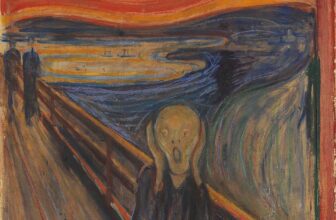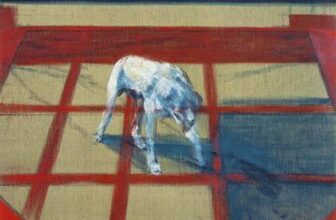
A Jester Playing the Lute Painting 1625
The Music of Expression: Unraveling“The Lute Player” and the Symbolism of the Lute in Art
In the golden haze of 17th-century Dutch art, where brushstrokes met light and life, Frans Hals painted moments not as static records, but as living, breathing episodes of humanity. Among his many masterworks stands “The Lute Player”, a painting that sings beyond its frame, not only with music but with expression, satire, and insight into the human soul. This vibrant, almost mischievous portrayal of a young man strumming a lute is more than just an image , it is a coded message about joy, transience, art, and perhaps even deception.
But what does “The Lute Player” truly mean? Why did artists like Hals repeatedly return to the motif of the lute? Who else immortalized this instrument on canvas? And where can one witness this masterpiece today?
Let’s embark on a journey into the world of Frans Hals, music in painting, and the elusive meanings hidden behind the smile of a lute player.
🎭 Frans Hals and the Pulse of the Dutch Golden Age
To understand The Lute Player, one must first appreciate the genius of its creator. Frans Hals (c. 1582–1666) was one of the preeminent portraitists of the Dutch Golden Age. Living and working in Haarlem, Hals brought to his paintings a remarkable liveliness that distinguished him from his contemporaries.
Unlike the polished realism of Vermeer or the introspective shadow play of Rembrandt, Hals infused his portraits with spontaneity, laughter, movement , they were snapshots of life rather than frozen monuments. His quick, visible brushstrokes and ability to capture fleeting expressions made him revolutionary.
While Hals is widely known for grand group portraits like The Banquet of the Officers of the St George Militia Company, The Lute Player is a more intimate, almost whimsical portrayal. It is part of a small group of so-called “genre portraits” , paintings that sit between traditional portraiture and genre scenes, depicting character types rather than specific individuals.
🎼 The Lute Player: A Closer Look
Painted around 1623–1624, The Lute Player features a young man clad in flamboyant attire, captured mid-song, eyes raised, mouth open in animated performance. The painting brims with motion: his tilted head, his expressive hands, and the dynamic folds of his sleeve convey a theatrical vitality.
But it is not merely his pose that speaks volumes. Hals’ technique , loose yet deliberate , adds energy to the piece. The subject’s gaze is directed upward and outward, drawing viewers into the performance. His slightly parted lips suggest he’s singing or perhaps inviting us to listen to his silent music.
While we know little of the model’s identity (if he was a real individual at all), Hals used this archetype multiple times. Similar figures appear in other works such as The Laughing Cavalier and The Gypsy Girl. These weren’t formal portraits but representations of types: the flirt, the merrymaker, the entertainer.
🪕 The Meaning of the Lute in Art
To grasp the symbolic depth of The Lute Player, we must decode the meaning of the lute itself.
The lute , a pear-shaped, stringed instrument , was immensely popular in Europe from the Middle Ages through the Baroque period. In art, it is a deeply symbolic object, with meanings shifting depending on context:
1. Love and Courtship
The most common symbolic association of the lute is with romance and sensuality. A man playing the lute often represents wooing or the power of music to stir the heart. In Dutch genre scenes, a young man playing for a lady often signified courtship , or seduction.
2. Transience and Vanity
As part of the vanitas tradition , artworks reminding viewers of life’s fleeting pleasures , lutes often appear alongside decaying flowers, skulls, or extinguished candles. Music, like beauty and youth, fades quickly. The lute thus serves as a symbol of ephemeral joy.
3. Harmony and Discord
The lute also symbolized harmony , not just musical but cosmic and social. A well-tuned instrument reflected order and virtue. However, when depicted broken or played in raucous company, it could imply moral laxity or chaos.
4. Deception and Foolery
Sometimes, the lute player is a charlatan or buffoon , a wandering entertainer who distracts with charm but has no substance. In this interpretation, music becomes illusion, and the performer a trickster.
In The Lute Player, Hals does not moralize. Instead, he revels in ambiguity. Is this young man a joyful troubadour, a symbol of fleeting youth, or a comical rogue? The answer, perhaps, is all three.
🖼️ Theatrical Roots and Influence
Some scholars believe The Lute Player is more than a depiction of a musician , it might represent a stock character from commedia dell’arte, the popular improvisational theater of the time. Characters like Il Capitano or Harlequin often appeared with instruments, and their exaggerated gestures echo the expression seen in Hals’ painting.
Theatricality is a hallmark of Hals’ genre portraits. They are not snapshots of real people but performances , the subject is playing a role, and the viewer is the audience.
This performative aspect heightens the painting’s mystery. Are we seeing a real man, a symbolic figure, or a theatrical mask? The answer shifts with every viewing.
The Most Famous Lute Player Painters in Art History
While Frans Hals’ The Lute Player is among the most celebrated, he is far from the only artist to explore this theme. The image of a musician , especially one playing the lute , fascinated artists across centuries and styles.
1. Caravaggio – “The Lute Player” (c. 1596)
Caravaggio’s version is darker, sensual, and intensely emotional. Painted around 1596, his lute player is androgynous, surrounded by fruit and flowers, dripping with vanitas symbolism. It’s a painting full of beauty and decay, temptation and loss.
2. Dirck van Baburen – “The Lute Player” (1622)
Van Baburen, a contemporary of Hals, was influenced by Caravaggio. His lute players are more direct and bawdy, often appearing in brothel scenes. His figures are stocky, their grins wide and knowing.
3. Jan Steen – Multiple Lute Player Scenes
Jan Steen often portrayed musical gatherings and revelry. His lute players are typically part of chaotic family or tavern scenes , symbols of disorder and indulgence.
4. Judith Leyster – “The Merry Trio” (c. 1629)
A student (or perhaps peer) of Hals, Leyster’s work often echoes his style. Her lute players share his lively energy but often include women, offering a different gender perspective.
Of all these, Caravaggio’s and Hals’ versions stand out as the most psychologically compelling , one with brooding sensuality, the other with exuberant charm.
Where is Frans Hals’ The Lute Player Today?
Frans Hals’ painting The Lute Player is currently housed at the Louvre Museum in Paris, France. This vibrant and energetic portrait, painted around 1623–1624, is a prime example of Hals’ signature style, lively brushwork, expressive facial features, and dynamic composition. It depicts a young man mid-performance, joyfully playing a lute, his head tilted and mouth open as if caught in song. The painting is celebrated for its spontaneity and the vivid sense of character it conveys, capturing a fleeting moment in time.
The painting entered the Louvre’s collection in the 19th century, reflecting the growing European interest in Dutch Golden Age art during that period. Frans Hals, though somewhat underappreciated in his own time compared to contemporaries like Rembrandt or Vermeer, gained significant recognition in later centuries for his masterful ability to portray human expression and movement.
At the Louvre, The Lute Player is part of the museum’s Department of Paintings, which features works by many great European artists from the 13th to the 19th centuries. Visitors to the museum can view this work alongside other Northern European paintings, gaining a broader appreciation of the rich artistic developments that occurred during the 17th century.
Interestingly, there are other paintings with similar titles and themes by Hals, and a few copies or workshop versions exist in other collections. However, the Louvre’s version is widely regarded as one of the most authentic and spirited representations of Hals’ artistry.
🧩 Interpretations and Legacy
So, what is the true meaning of The Lute Player by Frans Hals?
It is a painting about performance , both literal and metaphorical. It invites us into a moment of joy, but also encourages reflection on artifice, emotion, and human connection. The subject, caught mid-song, reminds us of the fleeting nature of music and life. Like a joke, a song, or a love affair , it dazzles briefly before vanishing.
The lute itself carries layered meanings , from harmony to seduction, from joy to deception. Hals, ever the observer of human quirks, paints his subject not with judgment but with affection and irony.
His influence endures. From Rembrandt to modern photographers, Hals’ ability to capture the spirit of a moment resonates across the centuries. The Lute Player remains a symbol not just of music, but of the human desire to express, to perform, and to connect.
🎤 Listening to the Silent Song
In a world where silence fills the gallery halls, The Lute Player by Frans Hals continues to play. Not through sound, but through paint, posture, and expression. It invites us to lean in, to imagine the tune, to feel the joy , and perhaps, to remember that life, like music, is made to be performed, enjoyed, and shared.
In the end, the painting is not just about a man and his lute. It’s about us, the viewers , drawn in, amused, perhaps even fooled , by the eternal game of art and illusion.




